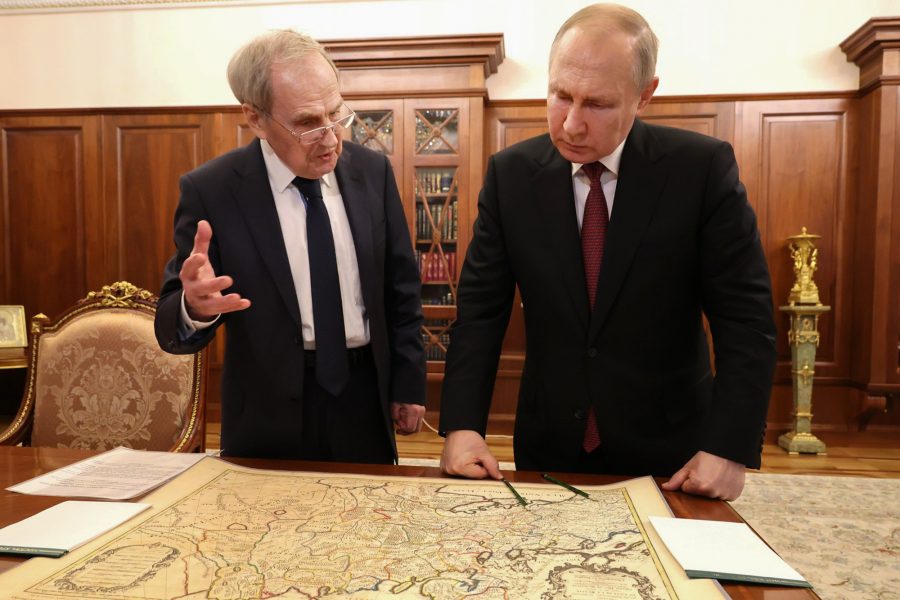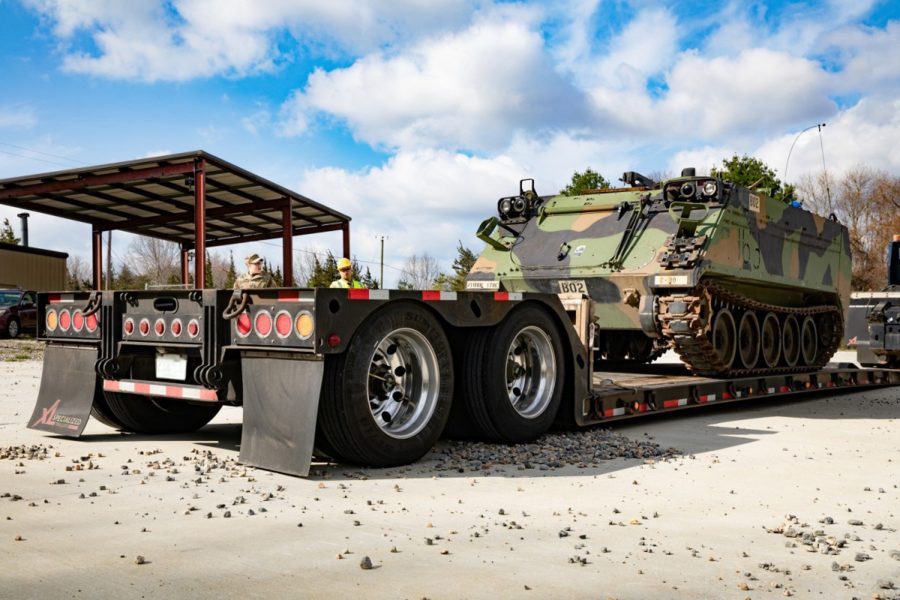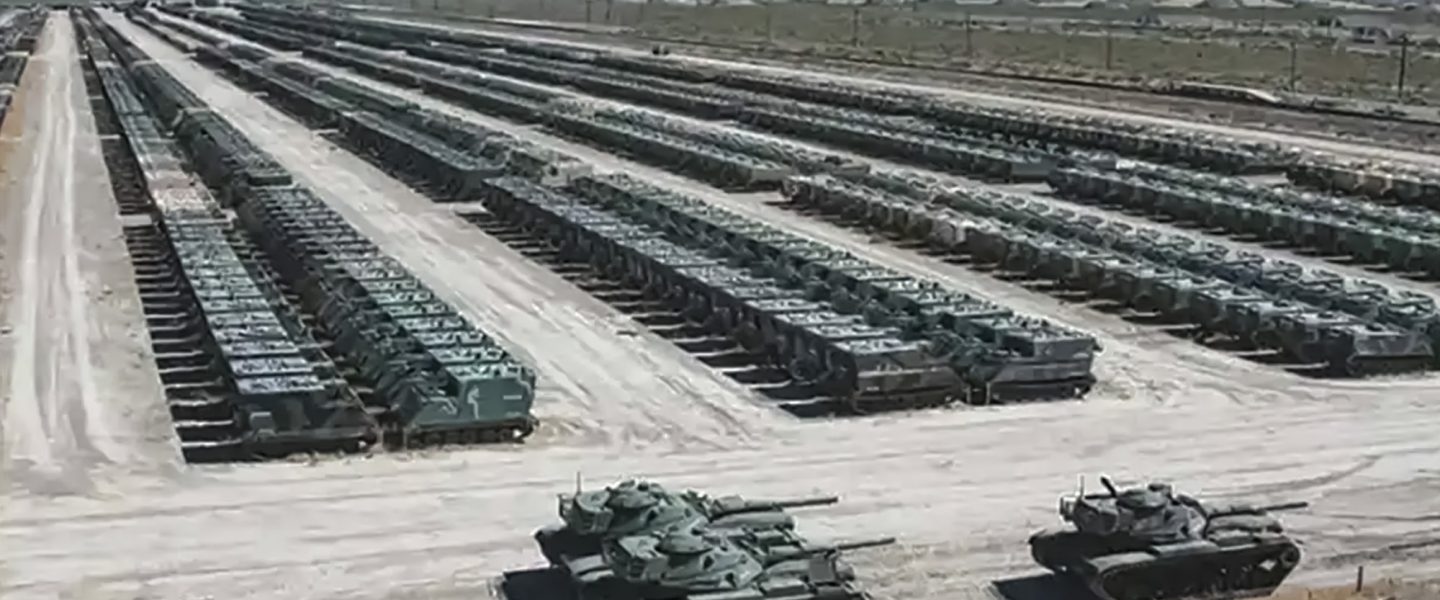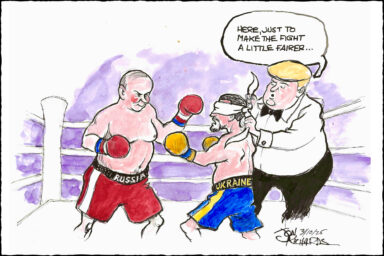What happens to Ukraine is more important to America than most people realize. American aid costs less than abandoning the country to be defeated by Putin.
|
Listen To This Story
|
Besides refusing to extend funding for the US government, fringe elements in Congress have also begun targeting US aid to Ukraine. Their basic questions: What has Ukraine got to do with the US? Why spend money on Ukraine when our annual debt and deficits keep growing?
Another argument frequently expressed by right-wingers is that the US has no direct strategic interest in Ukraine. But, contra-MAGA, what happens in Ukraine is very important to Europe, and what happens in Europe is strategically vital to US interests.
A third argument contends that giving the Ukrainians weapons to defend themselves is somehow prolonging the war and leading to even more civilian casualties. This supposes that if Vladimir Putin succeeds, he will treat Ukraine kindly. Anyone who thinks that should take a look at what happened when Russia recently bombed Syria back into the Stone Age, turned most of its population into refugees, and forced them to flee for their lives to neighboring countries that were subsequently destabilized as a result.
Putin’s imperial ambitions have already disrupted much of the world economy, and Russia’s penchant for letting mercenaries — many of them former convicts from Siberian gulags — romp across Africa does not predict a bright future, especially if the US turns its back and retreats into isolationism. Russia’s tried-and-tested strategy for bludgeoning another country into submission is nothing less than destruction of the long-standing infrastructure of daily life, followed by the brutal cowing of whatever population is left. Ukrainians have already had a taste of that and they can hardly expect anything less. Putin, who has done his best to resurrect the glory days of Stalin, is not someone whose mercies you can count on.

In this burgeoning debate, facts have been lost or simply overlooked. Chief among them is how much and what the US is actually giving to Ukraine. Last February, right-wing commentators like Steve Bannon and Tucker Carlson suggested that the total aid contribution might be as high as $200 billion. Fox News reported that it was already around $196 billion. No sources were cited, and the information, as far as anyone can tell, was patently false.
The most reliable source these days is Germany’s Kiel Institute for the World Economy. Kiel regularly updates the amount of aid flowing into Ukraine and offers an online “support tracker.” The estimated total US contribution so far is around $76.8 billion. The US contribution to Ukraine is actually less than the global amount given by institutions of the European Union, which already tops $80 billion. Germany and Britain have each given substantial sums independently.
Looked at in terms of percentage of the national economies, the US has donated less than a third of 1 percent of its GDP. That puts us near the bottom of the list of the 48 countries currently supporting Ukraine. The four countries contributing the largest percentage of GDP, according to the US Council on Foreign Relations, are Norway, Lithuania, Latvia, and Denmark. The only Western allies giving less than the United States as a percentage of GDP are Iceland, Switzerland, Austria, and Canada.
Of course, the US is the richest donor, so it’s not surprising that our contribution is substantially larger than any other single country’s. The $76.8 billion that Washington has sent to Ukraine since the invasion seems like a lot of money, but it is only a small fraction of the annual budget of the Pentagon, which is now more than $800 billion.
The one area where the US has definitely taken the lead is in donations of military hardware, which amount to $23.5 billion so far. What is often overlooked, however, is that much of the hardware sent to Ukraine in the early days of the war was already out of date by US standards and scheduled for the scrap heap. In effect, the Pentagon has been able to amortize an investment in a good deal of equipment that would otherwise have been mothballed.
For example, an early grant consisted of 300 M113 APCs (armored personnel carriers). These were used extensively in the Vietnam War, and they had disturbing vulnerabilities even then. They cost around $600,000 a piece, were made of aluminum, had a fairly reliable engine that was simple to repair and they could provide limited protection against shrapnel and small arms fire. But they were easily taken out by a shoulder-fired B-40 rocket grenade. The explosive shaped-charge of a B-40 cut through the M113’s armor like butter and literally shredded everything inside. As a result, most GI’s who served in Vietnam rode on top using sandbags as their only protection. I was there. It was a frightening experience. The chances that any US soldier would be asked to rely on an M113 in future combat is highly unlikely, yet the Pentagon has thousands of them waiting to be mothballed and used now mainly as ambulances or transport vehicles in relatively safe areas.

Photo credit: US Army
Another US donation to the woefully under-equipped Ukrainian forces right after the Russian invasion were Stryker armored personnel carriers. While more effective than the M113, the Strykers have also been classified as mostly useful for rear guard operations. At the moment, they are mostly used by the US Marine Corps military police on peace-keeping operations.
Much of the other equipment donated in the first rounds of aid was due for replacement. That includes a good deal of the equipment coming from European countries in NATO. If aid to Ukraine has helped different militaries amortize their older hardware, it has also provided an unexpected bonanza for some defense contractors. One US grant consisted of 2,000 Stinger shoulder-fired anti-aircraft missiles. When the missiles were first produced in the 1990s, they cost around $25,000 a piece. RTX (formerly Raytheon), which is the only company now manufacturing Stingers, currently sells them for around $400,000. That kind of profit-taking may be suspect, but the Ukrainians are fighting for their lives. They will take what they can get.
As the Ukrainian defenders progressively demonstrated that they were serious, and actually had a chance of repulsing the Russian onslaught, the quality and sophistication of the equipment received from the US and NATO increased substantially. The US grant of HIMARS (High Mobility Artillery Rocket System) has made a substantial difference in Ukraine’s ability to defend itself. At the same time, it has provided Pentagon analysts with a once-in-a-lifetime opportunity to evaluate the system under fire at no risk to American lives.
The Biden administration has cautiously insisted that the weapons it has given Ukraine are mainly useful for defense. The HIMARS have a range of around 50 miles. European allies are beginning to up the ante. “Storm Shadow” missiles provided by Britain can strike at a target more than 150 miles away. A Storm Shadow missile was used in the attack on the Russian headquarters at Sevastopol in Crimea.
At least initially, Ukraine’s armed forces were more familiar with the Russian military equipment in their arsenal, but they have demonstrated they can adapt rapidly and learn how to use more sophisticated equipment from the West. They have also shown that they can be extraordinarily innovative. In the end, however, the most important advantage that the Ukrainians have on their side is raw courage and a determination to protect their homeland regardless of the cost.
The real question now is which side will become exhausted first. Polish Prime Minister Andrzej Duda briefly made headlines by stating that Poland has decided to stop giving more weapons to Ukraine and will focus on restocking its own military. Most experts think that Duda’s statement was intended for domestic consumption before upcoming elections. Polish farmers have been complaining that inexpensive wheat from Ukraine has been edging local growers out of the market, and Duda, possibly offended by some of the aggressive demands made by Ukrainian President Volodymyr Zelenskyy, may have hoped to gain a few more votes with his announcement. The fact is, however, that Poland has already transferred most of its last-generation hardware to Ukraine and has nothing left to give. Most experts expect Poland to concentrate on rebuilding its depleted stocks with more modern equipment — after which it may start delivering arms again to Ukraine. The Poles have no illusions about Russia, their large and aggressive neighbor, and they know that it is in their interest to see Ukraine succeed.
Write-offs and financial profits are not the only issue, however. For defense strategists, Ukraine has turned into an ad hoc laboratory for new directions in large-scale modern warfare. The use of drones, both as airborne forward artillery “observers” and as a cheap alternative to cruise missiles, is just one of the game-changing developments to emerge from the fighting.
The US is providing Ukrainians with essential intelligence and in turn it is obtaining invaluable intelligence concerning Russian military capabilities, operating procedures, and strategy. In fact, Ukraine is providing a relatively inexpensive bonanza of information concerning what we may expect to see on future battlegrounds.
Like Saddam Hussein, Putin is a street-smart chess player who looks impressive for the first few moves but whose strategy is likely to fall apart after that. His last major asset may be a few fellow travelers in a partisan-divided US Congress. The future will be determined by who is able to stay in the game the longest.





